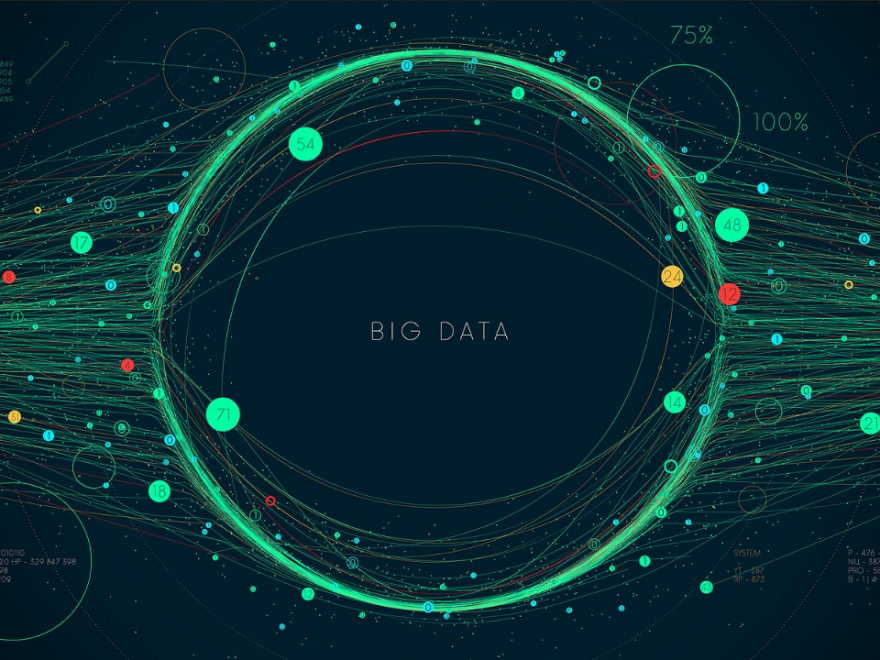Overview of Big Data
- Big Data definition: For simple understanding, Big Data has been defined as massive data and is under consistent growth with time.
- The examples for Big Data analytics include stock exchanges, jet engines, social media sites, etc.
- Big Data is divided into three types: 1) Structured, 2) Unstructured, 3) Semi-structured
- The significant characteristics of Big Data are Volume, Variety, Velocity, and Variability
- The significant advantages of Big Data are Improved customer service, better operational efficiency, and Better Decision
Definition of Big Data
Big Data is a massive amalgamation of data, which is growing progressively in time despite its volume. It is essential to mention that no traditional data management tool can work on its great size and importance.
More and more companies are swathing to the use of Big Data these days to outperform their peers. There are plenty of industries where both the likes of existing competitors and new entrants employ similar tactics to compete, innovate and capture value.
Examples of Big Data
Here’s a breakdown of notable examples for Big Data.
- The New York Stock Exchange (NYSE) collects about a terabyte of new trade data and information daily.
- The industrial analysis shows that a rough 500+ terabytes of new data are routinely ingested into social media databases such as Facebook. It’s essential to mention that uh voluminous data primarily contain a photo and video uploads, putting comments, message exchanges n much more.
- One jet engine can amass 10+ terabytes of data in just thirty minutes of flight time. Because thousands of flights travel per day, they can collectively gather many petabytes of data.
Types of Big Data
Here’s a breakdown of the three types of Big Data:
- Structured
It’s essential to mention that any particular data that allows the user to store, access, and process within a structured format is typically termed ‘structured’ data. Computer science’s rapid progression has managed to achieve successful developing techniques for working in the processing of Big Data over time. However, the modern-day industry experts and observers are experiencing issues when a Big Data size grows out of bounds, their general size being in the range of multiple zettabytes.
- Unstructured
There’s no denying that any data that is unformed or without any structure should be considered unstructured data. Furthermore, apart from the size of the data being vast, it also the non-structural formation brings various challenges against the processing. One fine example of unstructured data is a heterogeneous data source, which comes with a combination of text files, videos, images, etc.
- Semi-Structured
Arguably the best of both, semi-structured data combines the best of both data forms. Even though the user can identify semi-structured data as a structured form, it’s not defined with a table definition in relational DBMS, per se.
Characteristics of Big Data
Here’s a detailed breakdown of the significant characteristics of Big Data.
- Volume
- Variety
- Velocity
- Variability
Volume
It’s essential to highlight that the name Big Data means enormous. Naturally, the data size holds a key role in identifying the value out of the data. The data volume virtually determines if a particular data can be considered Big Data or not. Hence, it’s only safe to state that ‘Volume’ is a significant characteristic that demands consideration when dealing with Big Data.
Variety
The following important characteristic of Big Data is its variety. It refers directly to heterogeneous sources and the nature of data- both structured and unstructured. It’s essential to mention that only spreadsheets and databases were deemed fit data sources by most of the applications back in the earlier days. But in the modern era, any analysis of applications will always involve data in the form of emails, monitoring devices, photos, videos, PDFs. Unstructured data can often cause various unstructured data- posed issues for storage, mining and analyzing data.
Velocity
When it comes to discussing the characteristic of Big Data, velocity always pops into the mind. Here, the term “velocity” means the generational speed of data. Fast data processing and generational demands can effectively help in understanding the true potential of the data. Big Data’s velocity helps deal with the data speed from sources like business processes, networks, application logs, social media sites, sensors, Mobile devices, etc. There’s no denying that the data flow is vast and forever running.
Variability
Finally, variability is another characteristic that refers to the inconsistency that is sometimes available in data, effectively hampering handling and managing the data effectively.
Benefits of Big Data Processing
Here’s a detailed breakdown of the significant benefits that Big Data promises.
- Businesses Can Utilize Outside Intelligence While Taking Decisions
Exposure to social media data from social media sites and search engines like Facebook and Twitter empowers online business outfits to improve their business strategies.
- Improved Customer Service
Big Data technologies are paving ways for new systems to replace the more traditional customer feedback systems effectively. It’s essential to mention that these new systems will feature Big Data and natural language processing technologies to process consumer responses.
- Early Identification of Risk to the Product/Services, If Any
- Better Operational Efficiency
Lastly, Big Data technologies hold the potential for building a staging area or landing zone for new data before determining the necessary data for a location shift to the data warehouse. Additionally, it is only noteworthy to mention that any integration of Big Data technologies with a data warehouse effectively benefits an organization to drop unnecessary data.…
Continue reading
